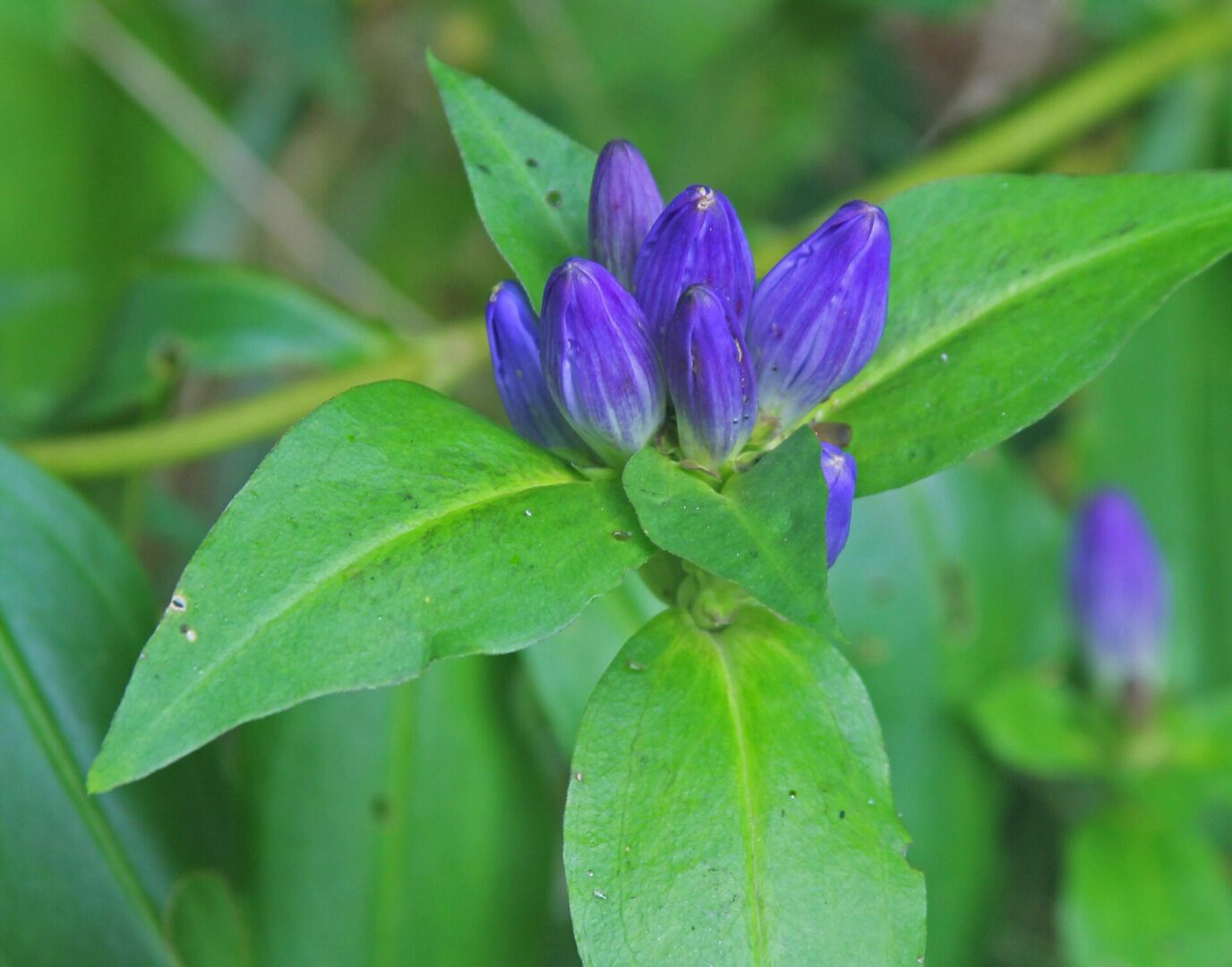Easily overshadowed by the showy asters and goldenrods at this time of year is the beautiful and rather unique closed gentian. The plant is also known as bottle gentian because its flower is bottle-shaped.
Closed gentian, a favorite of mine, is the flower that never opens, or so it seems. Its blue-violet petals point straight up and remain closed tightly in a bud-like fashion, hence its common names.
Strong insects, such as bumble bees, are the only ones powerful enough to pry open the “closed” petals and pollinate the plant. It is unknown how this adaptation benefits the plant. The eastern carpenter bee “cheats” by chewing a hole at the base of the flower — stealing the nectar without pollinating the plant. However, the holes created by carpenter bees allow smaller insects entry, and they in turn pollinate the flowers.
This gentian is an herbaceous perennial that grows in meadows, forest edges and roadsides where there is part shade and sufficient moisture. The plant is robust enough to withstand the extreme temperature variables found in Centre County during September and October, but it needs a fair amount of water to thrive. Closed gentian dies back to the ground late each fall, but its deep yellow root system survives the winter.
Bottle gentian usually grows from 12 to 24 inches tall. A cluster of three to 12 closed flowers sit atop its unbranched stem. Its glossy, lance-shaped leaves are whorled beneath the terminal flower cluster, but leaves are oppositely arranged as they extend down the stem. Healthy plants often have additional flowers growing from the bases of some of the paired leaves.
The gentian family and genus name of closed gentian, Gentiana, refers to King Gentius (180 to 167 BC) of ancient Illyria, who was believed to have discovered that the plant’s roots could be used to treat malaria. Other evidence suggests that the Egyptians used what we now call gentian more than 1,000 years before King Gentius did. The plant’s species name, andrewsii, was given to honor the early 19th-century botanical artist Henry Andrews.
Nearly 200 species of gentians exist worldwide — almost 100 in North America. Only eight species are known to grow in Pennsylvania, with two additional species once found but now believed to be extirpated. Some gentians are used in alcoholic beverages, and it is a key ingredient in Angostura bitters.
Native Americans used medicine made from gentian’s roots to treat various disorders. The Cherokee used it as a laxative and to treat a weak stomach. According to a thesis written by James Herrick, the Iroquois used it to treat headaches and liver ailments, and as an anti-witch charm.
Closed gentian grows in suitable habitat throughout eastern Canada and the northeastern and midwestern United States, including across most of Pennsylvania. It is classified as a threatened species in both Maryland and New York. Closed gentian is listed as a species of conservation concern in Rhode Island and Missouri due to loss of habitat. According to the U.S. Forest Service, closed gentian is easy to grow in moist wildflower gardens. It can be propagated by seed or rood division and is virtually insect and disease free.
Mark Nale writes a monthly outdoors column for The Centre County Gazette.



